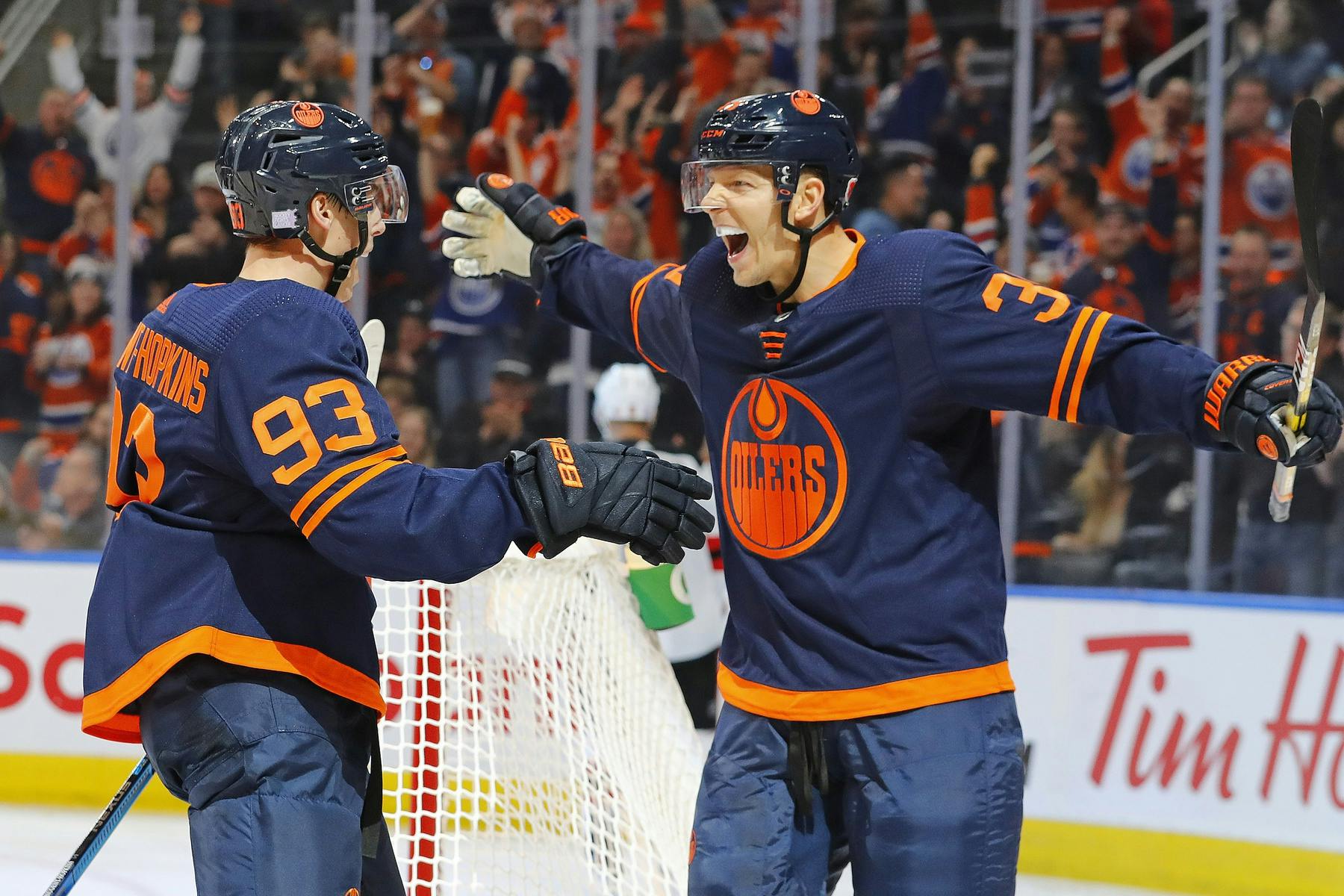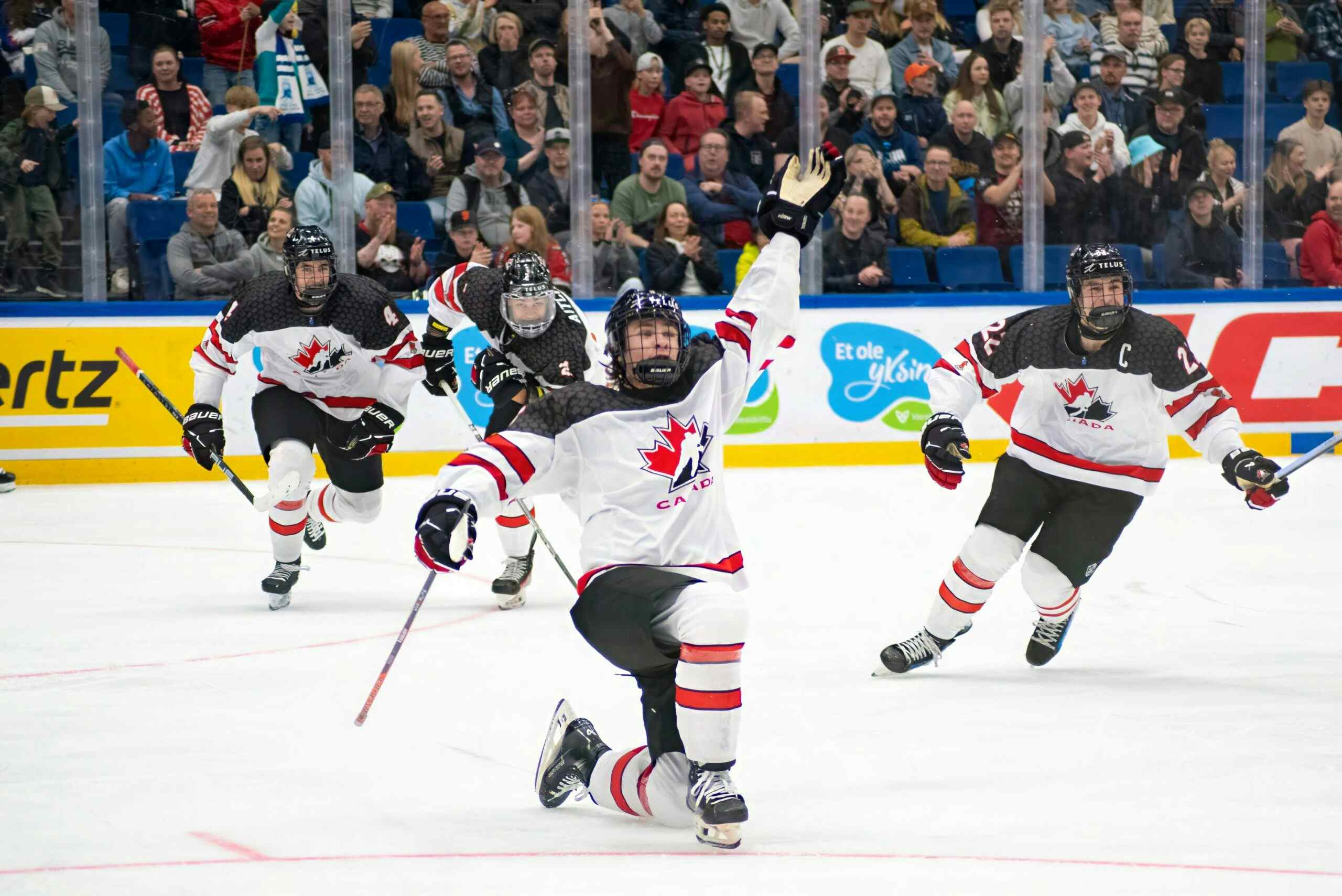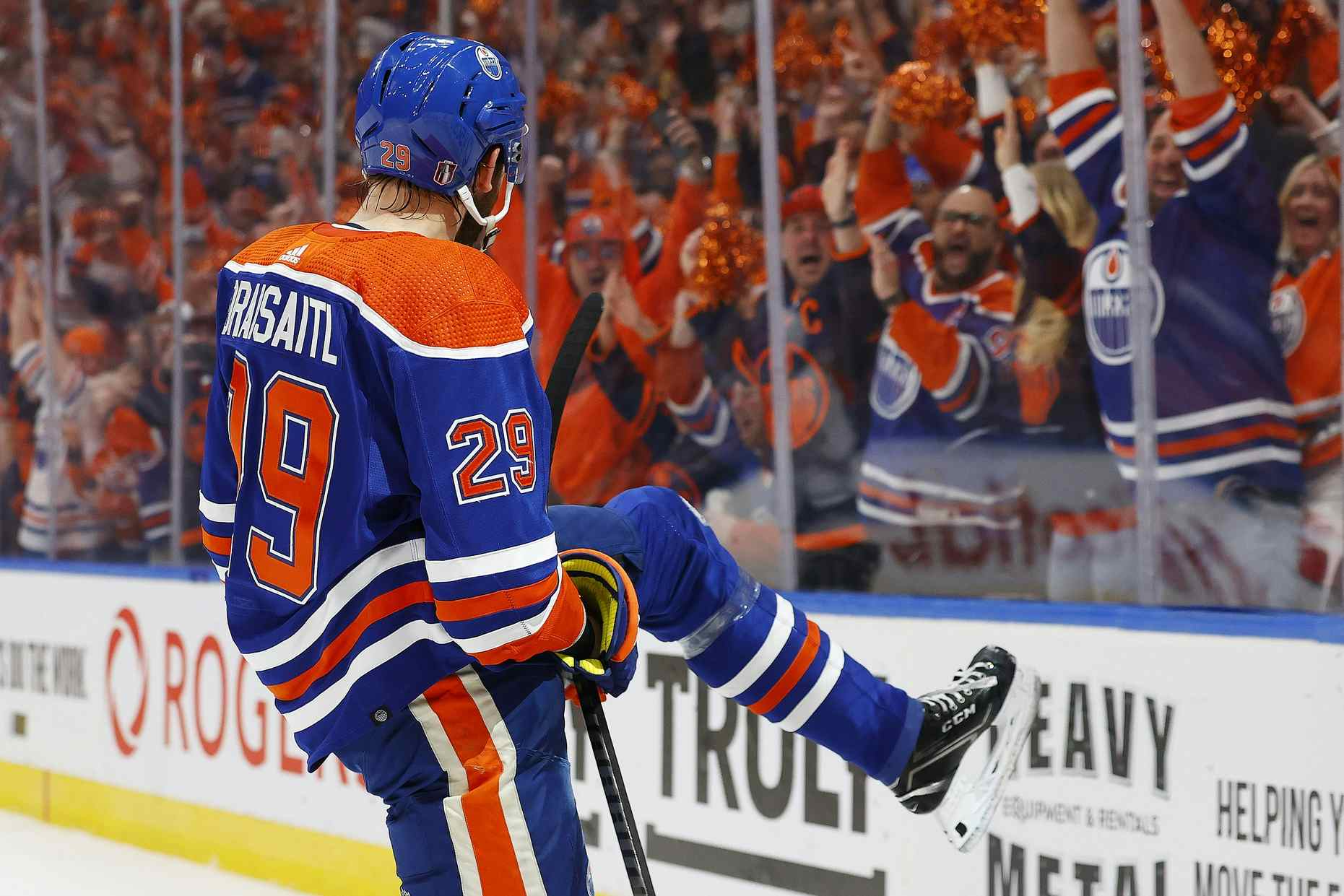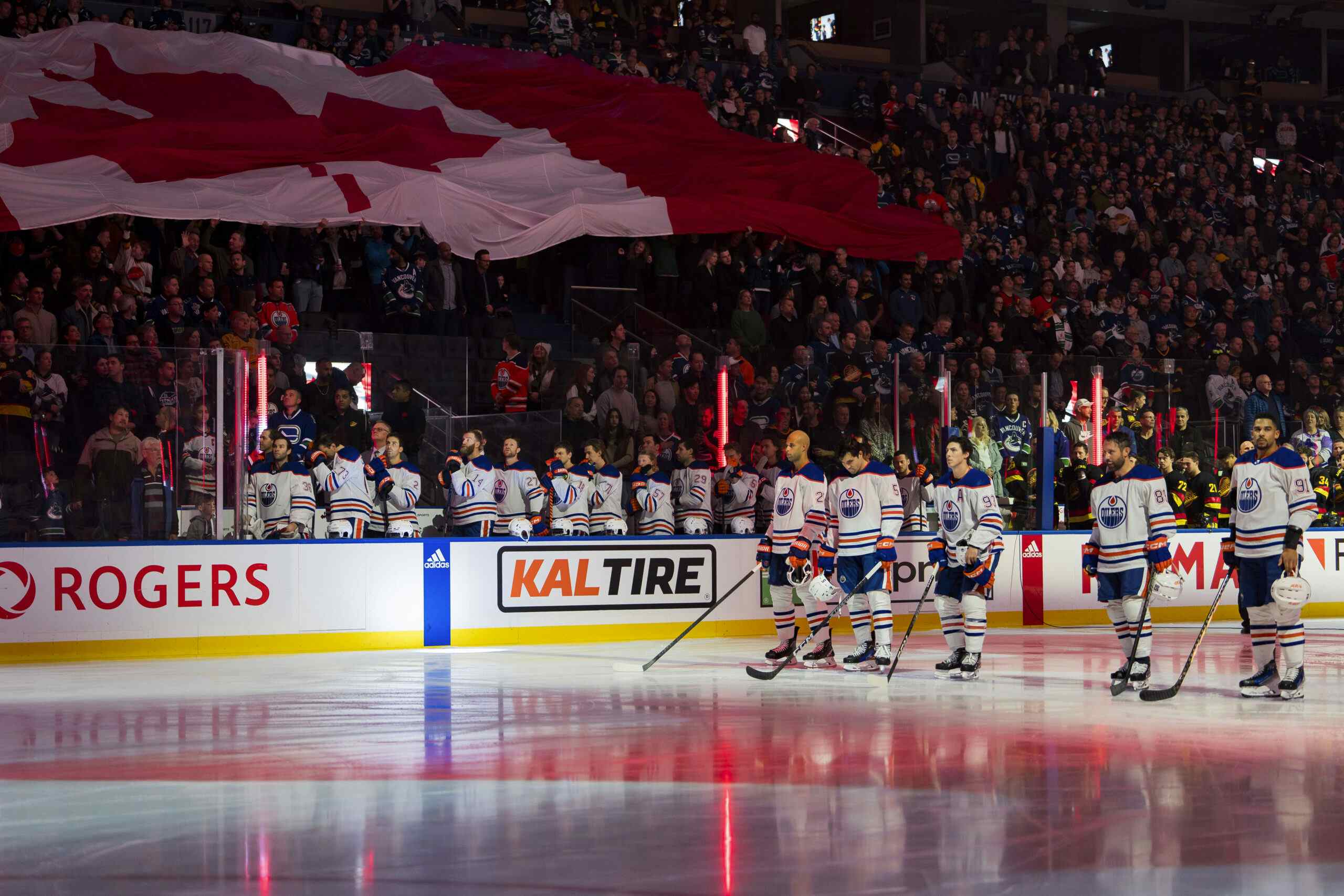The Edmonton Oilers: 2018 Vs. 2019

Well, the 2019-20 season is off to a fantastic start. After a bit of a rough two-game losing streak against the pesky @Arizona Coyotes– which might’ve been one of the most boring games since Jacques Lemaire coached the @Minnesota Wild in 2005– and the defending Stanley Cup champions St. Louis Blues, the Oilers bounced back and beat the @Taylor Hall’s lowly @New Jersey Devils into the ground with a 4-0 victory.
The Oilers are good! Top of the Pacific Division, and rolling!
So, through 18 games in 2019, how much better are they than the pitiful 2018 Oilers were at this same time last season?
Well, let’s take a look.
| Record | PTS | Conf. Seed | Div. Seed | PK | PP | GF | GA | Shots/GM | SA/GM | |
| 2018 | 9-8-1 | 19 | 6th | 4th | 74.1 (27th) | 19.0 (16th) | 52 | 56 | 31.8 | 29.8 |
| 2019 | 11-5-2 | 24 | 2nd | 1st | 84.5 (9th) | 27.5 (2nd) | 51 | 45 | 28.9 | 30.5 |
I’ll be honest, I didn’t think it would be as close as this. The Oilers weren’t in a horrible spot this time last year, but while last year’s team actually outscored this year’s version, they were absolutely bleeding goals. So where’s the difference? The most obvious turnaround is in special teams. The Oilers are one of three other teams with both PK and PP units currently in the top ten: the @Washington Capitals (PP 5th, PK 6th), the @San Jose Sharks (PP 7th, PK 1st)– though not sure that’s anything to write home about– and the @Florida Panthers (PP 9th, PK 8th)– so that’s certainly an improvement that’s worth noting. The only concern might be the volume of shots going either way: somehow the team this season is shooting less for and allowing more against.
And despite Chiarelli exiting and Holland entering the GM position this past off-season, depth scoring remains an issue for the team. In fact, it’s a little worse than it was this time last year.
Last season, they had 22 players with at least one point, 16 with at least one goal, and two with double digit goals (McDavid and Draisaitl), and 14 with at least one even strength goal (38 ES total goals).
This season, there are 20 players with at least one point, 14 with at least one goal, and two with double digit goals (Draisaitl and Neal), and 12 with at least one even strength goal (37 ES total goals).
Depth scoring remains an issue, but special teams and the goal differential have done a complete 180 under Tippett– something that he’s had a history of doing— and that’s a huge reason why the Oilers sit atop the Pacific division. But perhaps the biggest improvement that has lead the Oilers to this early success lies in the crease, on the backs of their goaltenders.
Here’s a look at just how much better it’s been, starting with last season’s tandem of @Cam Talbot and @Mikko Koskinen:
| GS | W | L | OTL | SA | GA | Sv% | GAA | SO | |
| Talbot | 13 | 5 | 7 | 1 | 363 | 38 | .895 | 3.09 | 0 |
| Koskinen | 5 | 4 | 1 | 0 | 170 | 14 | .918 | 2.52 | 1 |
Talbot was pulled in one start, so Koskinen is listed as playing in 6 games. It’s actually a little jarring to see how much McLellan leaned on Talbot to start the season even though he was clearly cratering. Yes, it’s fair to give McLellan the benefit of the doubt and understand why he would err on the side of Talbot, considering that the backup was an unproven 30-year-old goaltender straight from playing a European league. But to look and see that that Talbot started nearly three times the amount of games that Koskinen did while he was self-destructing and McLellan just, for what ever reason, elected not to deploy Koskinen more frequently to at least try to remedy to suffering is bizarre, especially considering that Koskinen was actually really good in the few games he played in.
So, how vastly has it improved this season?
| GS | W | L | OTL | SA | GA | Sv% | GAA | SO | |
| Koskinen | 8 | 6 | 1 | 1 | 259 | 19 | .927 | 2.18 | 1 |
| Smith | 10 | 5 | 4 | 1 | 285 | 21 | .926 | 2.22 | 1 |
So immediately what jumps out is the balance in playing time between the two goaltenders. Interestingly enough, Smith has been pulled in one game just as Talbot had been last year. But it’s likely because of this 1-2 punch, nearly-balanced deployment that’s lead to success for both Smith and Koskinen — Talbot had almost as many goals against himself last season that Koskinen and Smith do this season combined! After Koskinen’s 29 save shutout against the Devils, both goaltenders are in the top 10 in terms of Sv% (minimum 8 games started), while Koskinen is 6th in 5v5 Goals Saved Above Average (minimum 400 mins TOI) at 4.04.
Final Thought

Nov 8, 2019; Edmonton, Alberta, CAN; The Edmonton Oilers celebrate a second period goal by forward James Neal (18) against the New Jersey Devils at Rogers Place.
I personally have looked at the Oilers’ shooting totals over the past few weeks and thought it was concerning. But when comparing it two last season’s totals, it’s clear that it doesn’t tell the entire story. Whether Tippett’s system is simply just reducing the quality of shots by implementing a better defensive system in front of his goaltenders, or that by balancing their playing time, it’s kept them fresher and thus, better, what’s clear is that goaltending in 2019 is vastly improved for the Oilers. And though depth scoring isn’t at all where it should be to maintain this success, goaltending is one of three major areas have improved under Tippett, the other two being special teams, and goal differential.
That’s the recipe to make the playoffs.
Oh, and last thing: the Oilers’ PDO is currently 1.012 (8.02 On-Ice SH%; .914Sv%); that’s right in the zone where you want that analytical stat: sustainable.
Recent articles from Nicklaus Good





